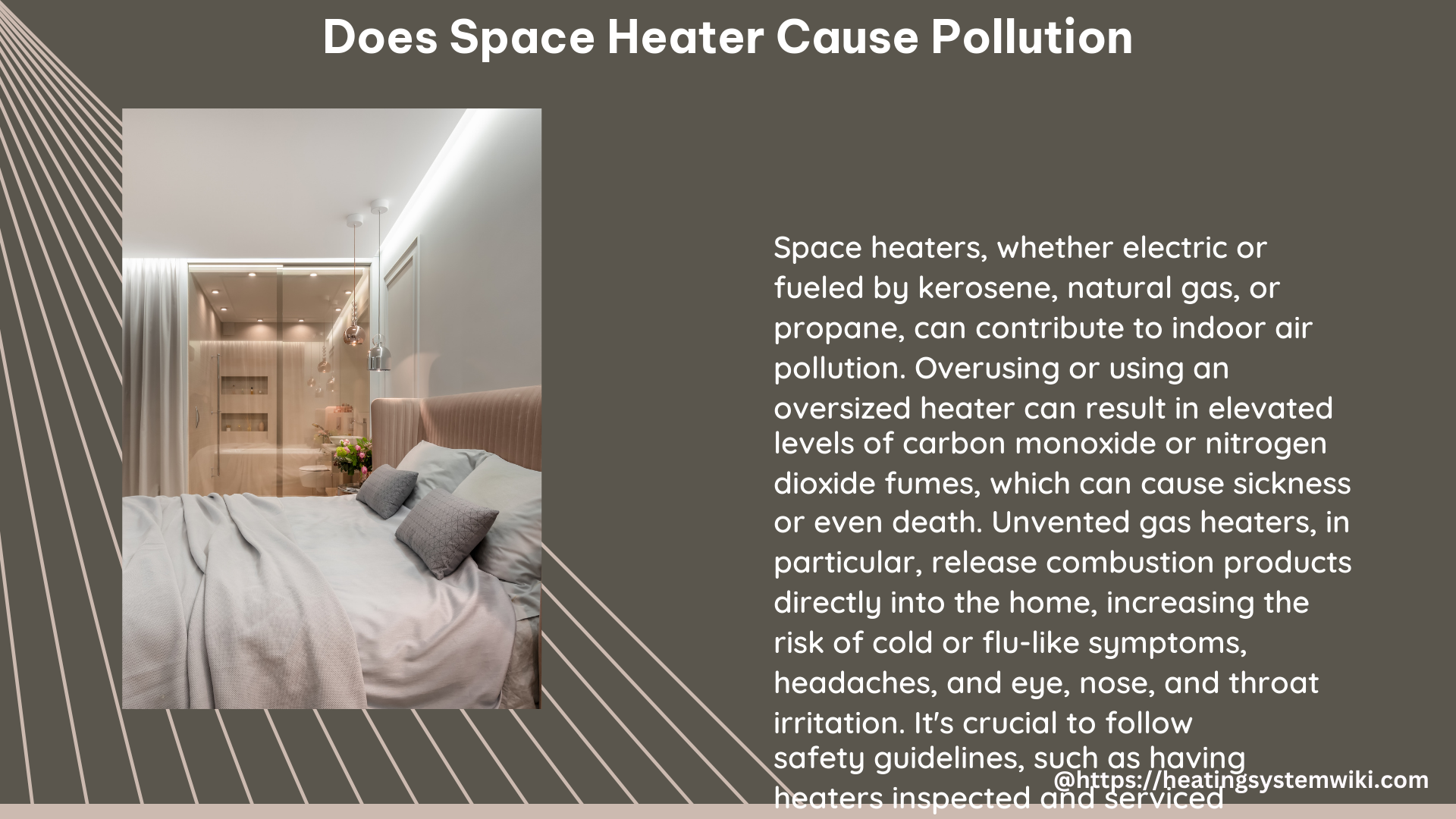Space heaters can contribute to indoor air pollution, which is a significant health concern. According to a study published in the Journal of Air and Waste Management Association, the use of gas and kerosene space heaters in homes can lead to increased levels of nitrogen dioxide (NO2), carbon monoxide (CO), and particulate matter (PM). These pollutants can cause respiratory problems, allergies, and other health issues.
The Impact of Space Heaters on Indoor Air Quality
Nitrogen Dioxide (NO2) and Carbon Dioxide (CO2) Levels
The concentrations of NO2 and CO2 were found to be comparatively high when using space heaters, especially under non-ventilation conditions. The values obtained from all the heaters except the electric heater exceeded the 1-hr Environmental Quality Standards, Japan (EQS NO2: 0.04-0.06 ppm) and the Building Sanitation Management Standards, Japan (BSMS CO2: 1,000 ppm), respectively.
Carbon Monoxide (CO) Emissions
Furthermore, the CO concentration emitted from reflection kerosene and town gas heaters slightly exceeded the BSMS (10 ppm). The concentrations of suspended particulate matter and polynuclear aromatic hydrocarbons showed an increasing tendency during the use of kerosene-fueled heaters.
Mitigating Indoor Air Pollution
To mitigate the risk of indoor air pollution, it is recommended to use space heaters with proper ventilation. Under two ventilating conditions, NOx concentration decreased to less than a third in comparison with non-ventilating condition.
Fire Hazards Associated with Space Heaters

In addition to the health risks associated with indoor air pollution, space heaters can also pose a fire hazard. According to the U.S. Consumer Product Safety Commission (CPSC), space heaters are associated with about 21,800 residential fires every year, resulting in approximately 300 deaths.
Reducing the Risk of Fire
To reduce the risk of fire, CPSC recommends:
- Selecting a space heater with a guard around the flame area or heating element.
- Placing the heater on a level, hard, and nonflammable surface.
- Keeping the heater at least three feet from bedding, drapes, furniture, or other flammable materials.
Recommendations for Safe Space Heater Use
To reduce the risk of health issues and fires associated with space heaters, consider the following recommendations:
- Proper Ventilation: Ensure adequate ventilation when using space heaters to minimize the buildup of indoor air pollutants.
- Placement: Place the space heater on a level, hard, and nonflammable surface, keeping it at least three feet from flammable materials.
- Annual Inspection: Have gas and kerosene space heaters inspected annually by a qualified professional to ensure proper functioning and safety.
- Carbon Monoxide Detector: Install a carbon monoxide detector if using a small space heater to monitor for potential CO buildup.
By following these guidelines, you can help reduce the risk of indoor air pollution and fire hazards associated with the use of space heaters.
References
- Effect of gas and kerosene space heaters on indoor air quality: a study in homes of Santiago, Chile. J Air Waste Manag Assoc. 2010 Jan;60(1):98-108. doi: 10.3155/1047-3289.60.1.98.
- CPSC Offers Tips to Prevent Home Fires Caused by Space Heaters. U.S. Consumer Product Safety Commission. January 15, 2002.
- Small Space Heaters. U.S. Department of Energy.
- What You Should Know About Space Heaters – Town of Riverhead. https://www.townofriverheadny.gov/files/documents/Space.heaters.pdf
- Indoor pollution from heating – PubMed. https://pubmed.ncbi.nlm.nih.gov/8768665/
- Best & Worst Space Heaters for Indoor Air Quality – MAMAVATION. https://www.mamavation.com/health/best-worst-space-heaters-for-indoor-air-quality.html
